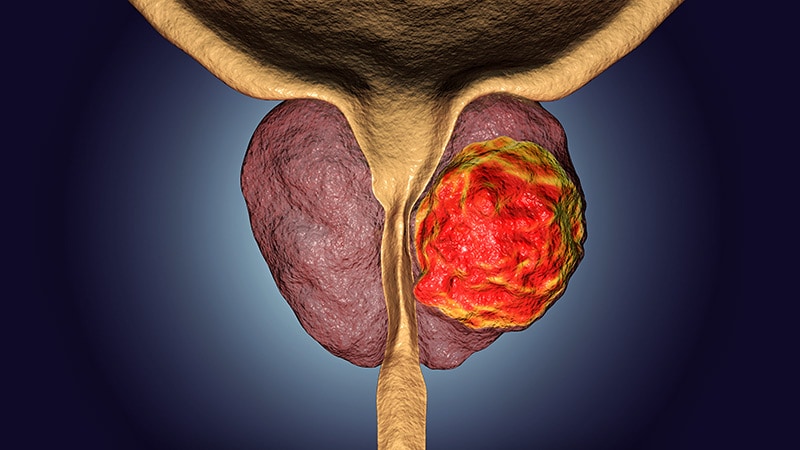TOPLINE:
Long-term results from a phase 3 study showed that adding a focal boost to standard external beam radiotherapy (EBRT) improved 10-year biochemical disease-free survival (DFS) and reduced biochemical failures by more than 50% in patients with localized intermediate- or high-risk prostate cancer. The approach also significantly improved DFS, local DFS, and nodal DFS but not overall survival or distant metastasis-free survival.
METHODOLOGY:
- Patients with localized intermediate- or high-risk prostate cancer often require high doses of EBRT; however, whole-gland dose escalation often leads to “unacceptable” toxicities, the researchers explained.
- To address this, the FLAME trial evaluated whether adding a focal boost to tumor lesions could improve biochemical DFS. Preliminary results indicated that dose escalation at the location of the primary tumor improved 5-year biochemical DFS, without additional toxicity. In this study, researchers reported 10-year follow-up results.
- Overall, 571 patients with intermediate- or high-risk prostate cancer were randomly assigned to receive either standard EBRT of 77 Gy in 35 fractions to the whole prostate gland (n = 287) or EBRT with an integrated focal boost up to 95 Gy to MRI-visible lesions (n = 284).
- The intention-to-treat analysis included 276 patients from the standard arm and 281 patients from the focal boost arm. Organ-at-risk constraints were prioritized over the focal boost dose during treatment planning.
- The primary endpoint was 10-year biochemical DFS; other outcomes were DFS, local DFS, nodal DFS, distant metastasis-free survival, and overall survival. The median follow-up duration was 106 months.
TAKEAWAY:
- At 10 years, biochemical DFS was 86% in the focal boost arm vs 71% in the standard arm (P < .001), corresponding to a reduction of more than 50% in biochemical failures (adjusted hazard ratio, 0.40; P < .001).
- At 10 years, DFS was significantly better in the focal boost arm (81% vs 67%; P < .001), as were local DFS (95% vs 86%) and nodal DFS (94% vs 85%).
- The dose-response analysis revealed a strong relationship between radiation dose and biochemical failure, with a biochemical failure rate of about 5% for doses exceeding 90 Gy.
- No statistically significant differences in distant metastasis-free survival (P = .17) or overall survival (P = .77) were observed between the treatment arms; however, a dose-response relationship was observed, with higher focal doses linked to reduced distant metastatic failure.
IN PRACTICE:
The 10-year results demonstrated the “sustained benefit of focal boosting for patients with intermediate- and high-risk [prostate cancer] on their [biochemical disease-free survival],” the authors wrote. Moreover, “in comparison with other therapy options (eg, hormonal therapy, brachytherapy), there is no additional treatment-related toxicity, but 15% more men can be spared the potential burden of [prostate cancer] recurrence.”
SOURCE:
The study, led by Karolina Menne Guricova, MSc, the Netherlands Cancer Institute in Amsterdam, the Netherlands, was published online in Journal of Clinical Oncology.
LIMITATIONS:
The study was underpowered to detect differences in additional outcomes. Imaging standards and contouring guidelines evolved during the study, leading to heterogeneity in focal boost dose delivery.
DISCLOSURES:
The study received funding support through grants from the Dutch Cancer Society. Some authors reported receiving honoraria or research funding from and having other ties with various sources. Additional disclosures are noted in the original article.
This article was created using several editorial tools, including AI, as part of the process. Human editors reviewed this content before publication.
